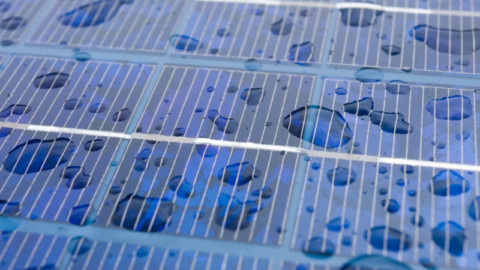Whether you are inspecting insulators, transformers, switch gears or high voltage powerlines, you need to be sure that you spot a problem quickly and early. Partial discharge that goes unchecked can cause blackouts, fires, explosions or death from arc flashes. In addition to the danger that partial discharge poses to human lives and the environment, there is a significant monetary risk of downtime. Having equipment go down can cost millions of dollars per hour of downtime. Preventive partial discharge/corona inspection, maintenance and cleaning have proven to be best practices to reduce these risks.
The Fluke ii910 Precision Acoustic Imager is the perfect tool for high voltage electricians, electrical test engineers and grid maintenance teams that are constantly inspecting and maintaining power distribution and industrial high voltage equipment.
Fluke’s innovative SoundSight™ technology lets users see sounds by capturing sound frequencies through a built-in acoustic array of tiny sensitive microphones which generates a spectrum of decibel levels per frequency. Based on this output, the algorithm calculates a coloured sound image, known as SoundMap™, that is superimposed over a visible light image of the equipment to show the exact location where the ultrasonic vibration came from.
With the frequency range of 2-100kHz, and the 7” LCD touchscreen, the Fluke ii910 lets users manipulate the frequency filter range easily and quickly. This helps the device to filter out noisy outdoor environments and loud production noises in an industrial area. Keeping the maintenance team safe is a top priority for each maintenance or Substation Manager.
With a detection distance of up to 120m, the team can operate more safely from a distance and reduce the risk of being exposed to potential arcing or even explosions as a result of flashovers. Key areas to scan for partial discharge are transformers, high voltage powerlines and coils, switch gears, arrestors, busbars, breakers and capacitors.
For industrial plants and facilities, compressed air, gas and vacuum systems are a vital source of converted energy. They run machines, tools, robotics, lasers, product handling systems and much more. Yet many compressed air, gas and vacuum systems are compromised by wear and poor maintenance practices, which contribute to the greatest waste of all – the ever-present leaks.
These leaks can be hidden behind machines, at connection points, overhead in fixed pipes, or in cracked pipes or worn hoses. The waste adds up quickly and can even lead to downtime.
Mainstream leak detection practices are, unfortunately, quite primitive. An age-old method is to listen for hissing sounds, which are virtually impossible to hear in many environments and to spray soapy water on the area of the suspected leak, which is messy and can create a possible slipping hazard. These units also require the operator to be located close to the equipment to find leaks, during a shutdown where it is quiet, which makes it difficult to use, especially in hard-to-reach areas such as ceilings or behind other equipment.
The ability to visually scan large areas from up to 50-100m away with the sonic imager can help expedite leak detection at manufacturing plants that rely heavily on pneumatics. This significantly reduces the hours of labour spent on that task in addition to saving electrical energy costs in compressor running to compensate leaks and extend equipment life.
Users can quickly adjust frequency filters on the touch screens to cut out loud equipment/production/vehicle noises and only display what’s required. Efficiently fixing and repairing leaks can lead to substantial cost reduction for air dependent businesses. Key areas where leaks can be found are couplings, hoses, tubes, fittings, threaded pipe joints, traps, valves, flanges, air lines and pneumatic holding lines.
This partner content was brought to you by Fluke. For more information or a demonstration of the Fluke ii900 series from a Fluke specialist, visit www.fluke.co/ii910au.














